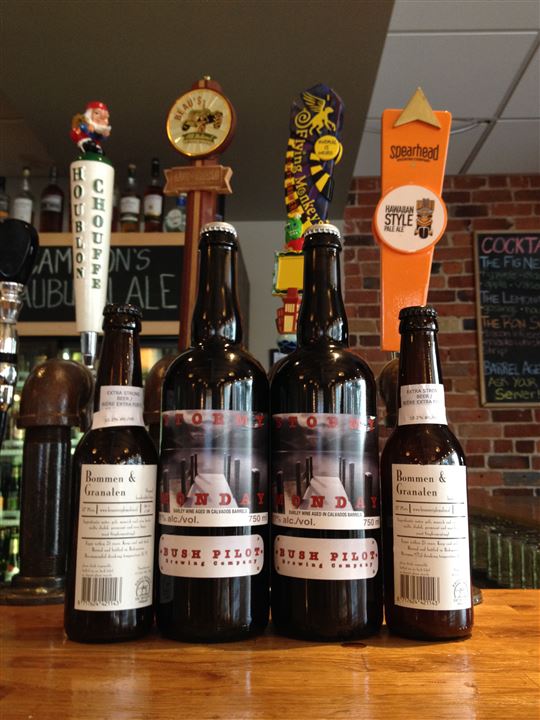“Shhhh…..You Had Me at [Wine!]” #Barley Wine

Whoa….whoa…wait a minute….there’s a style of beer with WINE in its name? I’m IN! Are you really that surprised? There are no grapes in barley wine, however. This may or may not disappoint you. Barley wine is the strongest style of beer, almost always reaching vinous strength of anywhere between 8%-14% abv (hence its name). It can often boast complex flavours similar to port or sherry. Any sherry fans in the house?! Get on board, this train is destined for Pleasuretown!
Barley wine was ‘born’ during the mid to late 18th century in England with the intention of exclusively supplying wealthy houses, and often playing a similar role to wine at the table. This was key when difficulties between England and other European wine producing countries were faced with interruptions of wine supply for extended periods at a time. (Can you imagine being cut-off from a supply of wine? Tragic to say the least….)
During early stages of its development in British farmhouse brewing, barley wine (otherwise simply known at the time as ‘strong ale’) was a result of the first draw from the mash (also known as ‘strong wort’). The second runnings of the mash were instrumental in creating the ‘light beer’ of its day- or as it was commonly referred to as ‘small beer’. This ancient method of brewing is known as ‘partigyle’ brewing. Barley wine was often aged in wooden barrels, just like wine. This allowed for the intensely flavoured strong ale to mellow out its malty, hoppy bitterness.
The brewers of Bass, Ratcliffe, & Gretton of Burton Upon Trent (it sounds like a law firm, no?) began producing a single-brew barley wine in 1854. They named it simply No.1. It was distinctive for both its single brew method, and its pale hue in comparison to its darker, amber coloured barley wines formulated by competitors. Bass brewers innovatively used pale malts as they were more economically feasible than the darker malts during that time. Other breweries such as Tennents Gold Label and Fullers Golden Pride followed suit with producing paler versions similar to No.1.
Let us fast forward to modern day barley wine, and how it has evolved in terms of production and style. Beginning with the process, barley wine is expensive and at times, difficult to produce. The extensive amount of requisite materials, plus dedication towards procedure vigilance are all factors contributing to barley wine’s more-often-than-not higher price tag. Traditionally brewed with pale malt, the brewmaster may choose to add sugar into the kettle which will concentrate during the lengthy boiling process, resulting in a luxurious deep amber hue. Fermentation can take up to weeks, and the aging period can last months, or even years before it is released to consumers. Patience is a virtue in this case, and wine enthusiasts would most likely empathize with barley wine lovers for this very reason.
Generally speaking, we can expect deep layers of flavour and richness from these weighty brews beginning with pronounced and concentrated toffee-like malt flavours, warm alcoholic spiciness, and dark fruit -reminiscent of tawny port or cream sherry. Carbonation is typically low emphasizing a round and juicy semi-sweet palate. In its youth, bitterness is amplified; as it ages, the bitterness mellows, and all of the other complex components mingle together to create a beautiful ‘sipper’ of the beer world. (Are you drooling yet?)
There are of course as usual, a range of ‘contemporary’ interpretations of the vinous strong ale around the globe. The North American West Coast versions lean towards a hoppier style, while their British examples are notorious for boozier, sherry-like characteristics. The American North Eastern styles tend to showcase sweeter, and obviously-aged styles. This may be due to stronger historical ties with the United Kingdom.
As we are fast approaching the holiday season, maybe you want to shock your family and friends with some barley wine to accompany the-post-holiday-meal cheese tray instead of the usual port or sherry? Or perhaps you want to try both….at the SAME TIME and compare similarities or differences? Either way, you won’t be disappointed!
Written by Kristin Perrin
Originally posted for Brother Bistro Blog
References: The Oxford Companion to Beer, by: Garrett Oliver, At The Brewmasters Table, by: Garrett Oliver

No comments yet.